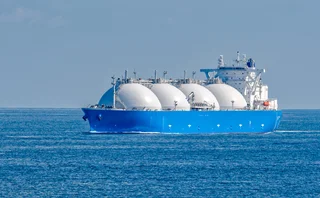
Valuation of commodity structures in co-integrated futures markets
In this paper, Dan Mahoney and Krzysztof Wolyniec show that in co-integrated (mean-reverting) futures markets, active dynamic hedging is required to realise the quadratic variation of the underlying spread process. Using static hedges/portfolios yields significantly different values from those available with dynamic strategies no matter what risk adjustment or penalty is adopted. The implications for pricing, hedging and optimal trading strategies in commodity markets are discussed

It is well known that several consumable commodity markets are related through equilibrium mechanisms: either through substitution or complementarity effects. For example, natural gas is used for production of electrical power in the US and UK to such an extent that power price formation is clearly influenced by the behaviour of natural gas prices.
Examples of other related commodities abound: crude oil and gasoline, heating oil and gasoline (substitution on the output side), natural gas and
Only users who have a paid subscription or are part of a corporate subscription are able to print or copy content.
To access these options, along with all other subscription benefits, please contact info@risk.net or view our subscription options here: http://subscriptions.risk.net/subscribe
You are currently unable to print this content. Please contact info@risk.net to find out more.
You are currently unable to copy this content. Please contact info@risk.net to find out more.
Copyright Infopro Digital Limited. All rights reserved.
You may share this content using our article tools. Printing this content is for the sole use of the Authorised User (named subscriber), as outlined in our terms and conditions - https://www.infopro-insight.com/terms-conditions/insight-subscriptions/
If you would like to purchase additional rights please email info@risk.net
Copyright Infopro Digital Limited. All rights reserved.
You may share this content using our article tools. Copying this content is for the sole use of the Authorised User (named subscriber), as outlined in our terms and conditions - https://www.infopro-insight.com/terms-conditions/insight-subscriptions/
If you would like to purchase additional rights please email info@risk.net
More on Commodity markets
Green knights? Banks step into struggling carbon credit markets
Clearer global standards and a new exchange may attract dealer entry, but supply and demand challenges remain
Bachelier – a strange new world for oil options
Model tuned to negative prices has implications for pricing, margining and delta hedging
Asian LNG derivatives trade surges on increased hedging
Expectations grow that a long-awaited Asian gas derivatives market is emerging
US courts restrict reach of Commodity Exchange Act
Recent cases make it harder to pursue instances of overseas misconduct
Esma releases first crop of position limits
Regulator moving away from publishing all limits in November
Carbon life force: derivatives defy coal's bleak future
Coal producers shorting volatility to collect premium, say traders
Plastics hedging rising amid US chemical industry boom
Several obstacles limiting potential growth, say plastics market participants
Q&A: French regulator defends Mifid II commodity rules
Mifid II won't hit energy hedging, Esma task force member says
Most read
- Top 10 operational risks for 2024
- The American way: a stress-test substitute for Basel’s IRRBB?
- Filling gaps in market data with optimal transport







